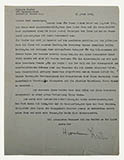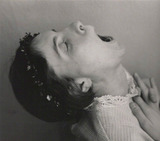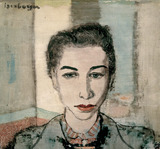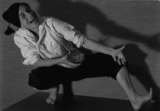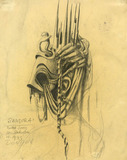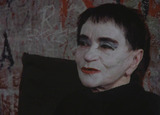Anna Riwkin-Brick: Dancer Jula Géris (Jula Isenburger) (1936)
Anna Riwkin-Brick: Dancer Jula Géris (Jula Isenburger) (1936)
Madame Jula Geris tanzte geschmeidig und harmonisch einen Walzer von Poulenc „Nana“, einen Bauerntanz und die „Parane pour une Infante Défunte“ von Ravel, mit der sie unsere tiefe Sehnsucht und unendliche Träume weckte.
[Madame Jula Géris danced lithely and harmoniously to Poulenc's "Nana" waltz, a peasant dance, and the "Pavane pour une Infante Défunte" by Ravel, evoking never-ending dreams and intense longing. (ed. trans.)]
Review in "Le Nouvelliste", St.-Etienne, 29 February 1936
Before going into exile, Jula Isenburger, alias Jula Géris, worked as a solo dancer at the Salzburg Festival, at the theatre of Max Reinhardt as well as at the dance theatre of Mary Wigman. In exile in France she was initially a member of a local dance group and later became a solo dancer. Despite the success with the group, she left to tour with her own solo show. She found an agent who organised performances for her in various cities in France. As a result she danced e.g. at the Salle Pleyel in Paris.
She was first accompanied musically by Joseph Kosma and later by a less well-known pianist who had also fled Germany. Through him she learned a great deal about new French music, including Les Six. He introduced her to the music of Joseph-Maurice Ravel and Francis Jean Marcel Poulenc, and together they developed a solo show of 12 dances.
The photo shows Jula Isenburger in 1936 dancing to a waltz by Francis Poulenc. Her stage costumes, such as the one shown here, were designed by her husband Eric Isenburger and made up by a dressmaker. The Swede Anna Riwkin, the photographer of the picture, specialised in dance photography. What is special about this type of photographic art is that the depiction of reality is relativised and replaced by an artistic representation. Unlike portrait photography, for example, movement becomes the central design element. An understanding of dance movements and a feeling for the right moment are crucial here.


